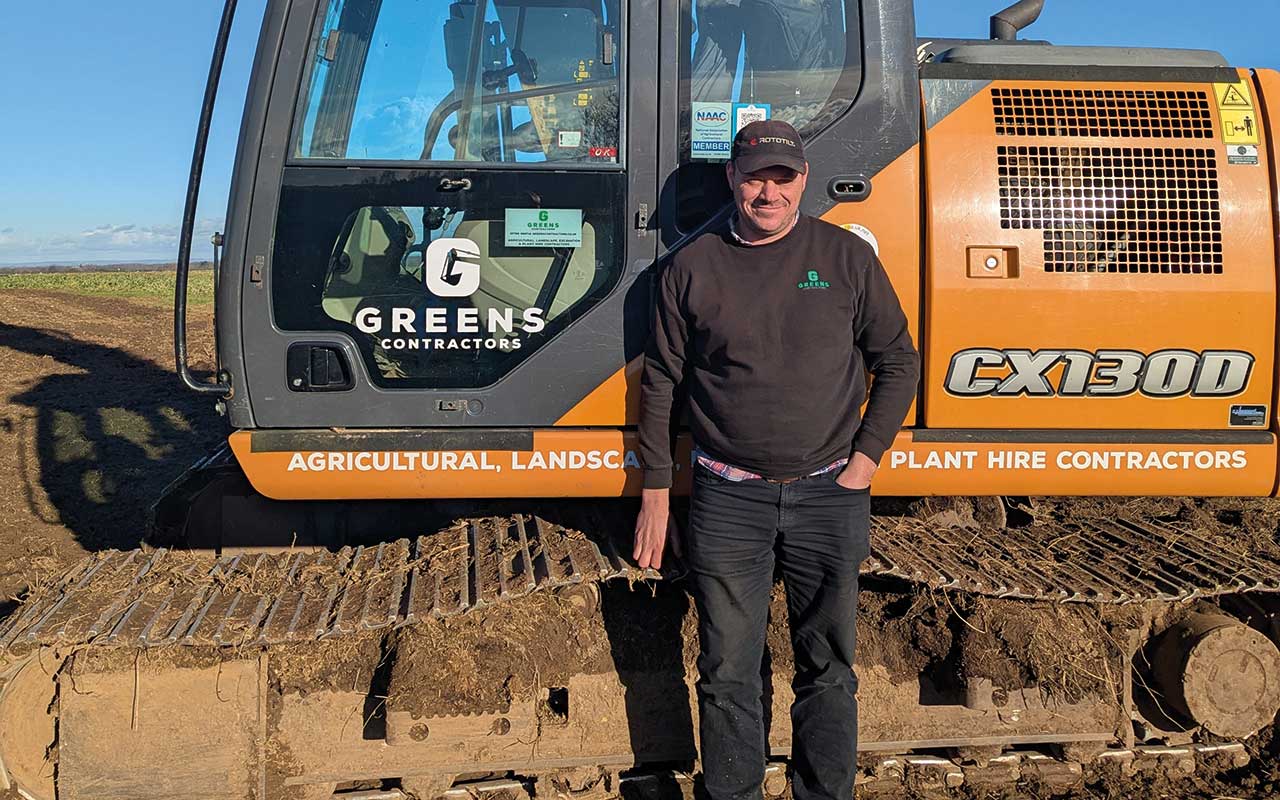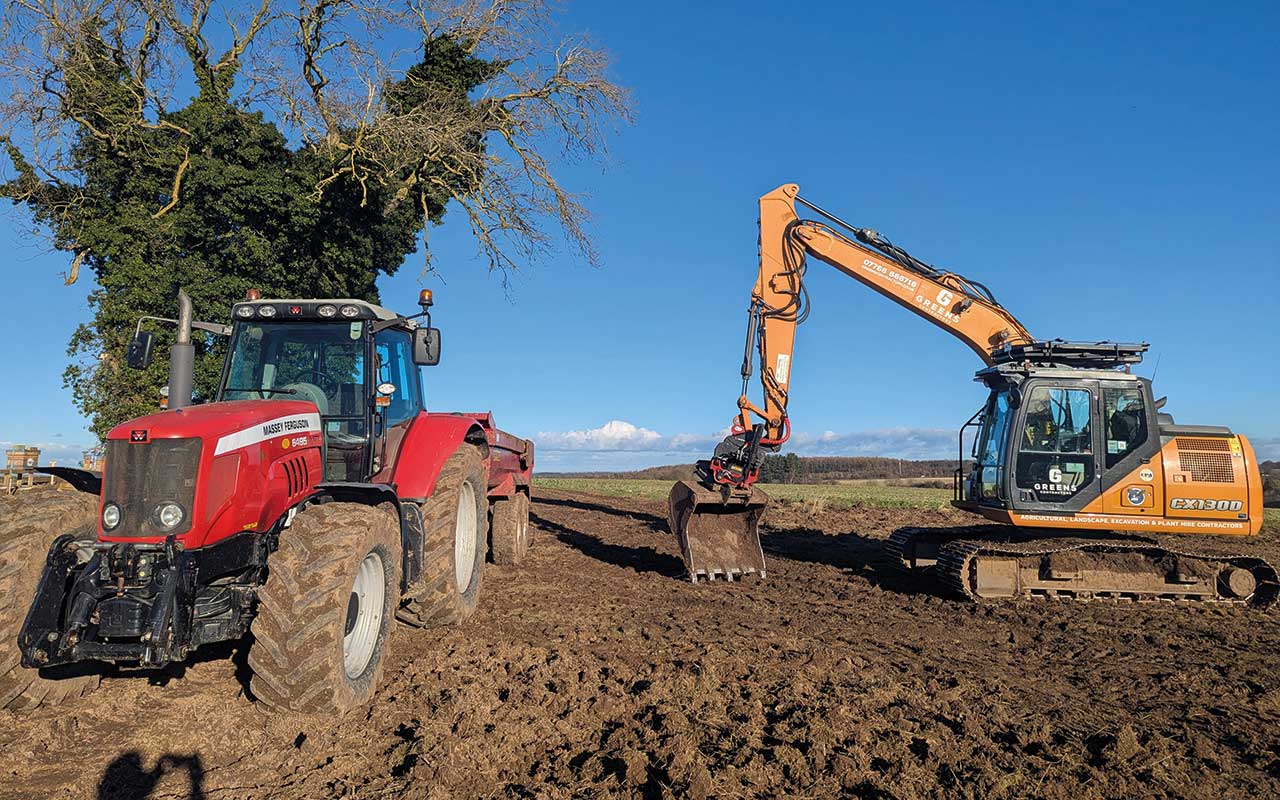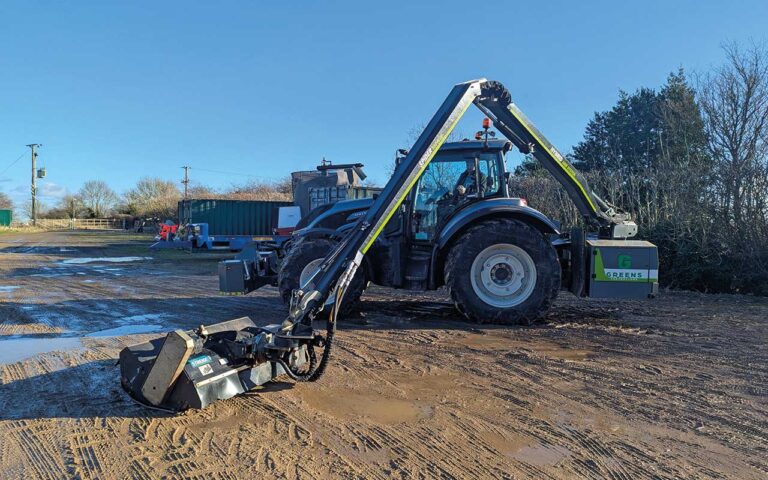When we first visited Rod Green back in 2018, he was just two years into running his own contracting company, focused primarily on plant contracting, groundworks and hedgetrimming.
He had already picked up work with the drainage board, putting in yearly tenders, which were completed with a New Holland TM165 and an 8m Bomford Turner Buzzard.
He noted that he was on the lookout for ways to expand the business, with the one limiting factor being that he was a sole operator.
Fast forward to today and the business has grown significantly, with Rod now working with his brother, Johnny, who handles accounts and administration, and self-employed owner/operator Rob Harrison.
“Rob is great because he can drive anything,” Rod explains. “He comes in with a tractor and hedgecutter and is able to clear up a lot of the farm and private residence work while I’m busy with the drainage board ditching or groundworks.”

With the capacity for additional work has come investment. Rod says he puts everything back into the business. In 2019, he swapped the Bomford out for an 8m McConnel machine.
This was in part due to the specification that the second-hand unit was offered with, with hydraulic control of the rear roller and the hood, as well as an increased working width thanks to the 1.5m flailhead.
He also invested in a 3t Volvo excavator, which was soon traded in for an 8t Doosan machine. As more work came in, he eventually bit the bullet and opted for a 14t Case CX130D at the end of 2019.
“I was always hiring in machines between 3t and 14t, as well as backhoe loaders. When it came time to invest, it made sense to opt for a machine I was familiar with, having driven a Case when I worked for Ross Plant Hire.”
The decision to increase the size of the equipment was a practical one. It meant Rod could tender for larger work. To maximise the versatility of operations, in 2021 he also invested in a RotoTilt unit, enabling the attachment to rotate through 360deg and work efficiently with fewer track movements.
“It wasn’t a cheap option, but it saves a huge amount of time when swapping over attachments,” he says.
“It has almost saved me the cost of a full-time worker and we’ve gained a lot of work because of it. It means we can get our 16t machine into a lot of areas we would have needed smaller equipment for.”

Hauling kit
The switch to a larger excavator meant Rod needed to reassess how equipment was moved between sites. He invested in a second-hand Volvo beavertail lorry, with a view to further diversify into haulage.
“There were definitely some opportunities there, and since I had my class 2 licence and Johnny was going to take his class 1, it seemed like the ideal situation,” Rod explains.
“Unfortunately, it quickly became clear that it wasn’t going to fit in quite as easily as I’d thought, and we’d have had to hire in drivers to make it work.”
After a year, he sold the lorry and used the money to invest in a tri-axle low-loader trailer. “I also purchased a Massey Ferguson 6495, which we use for towing the trailer and runs on white diesel.”
The main power of the operation is supplied by a Valtra T174. Rod initially looked at Valtra because of the option of reverse drive. However, he decided against this specification and instead opted for a non-reversible operator station, but with a right-hand wiper and wheel weights, and a new hedgecutter.
After researching what was available on the market, he found the GreenTec Spider. This machine has an 8.2m reach and can be used on the right and left side, with a 270deg rotating flailhead, to reduce the amount of back and forth when working along ditches.
“It was a significant investment for me,” he says. “But we’d just tendered for a three-year contract with the drainage board, whereas they’d previously only given out one-year contracts. Knowing I had three years of work, often totalling 1,000 hours each season, gave me the confidence to take this step.”
The long-term work for the drainage board means Rod has now filled out the workload for the year. Groundswork and landscaping runs through the winter and spring, while ditching work starts around July and runs through to December, at which point general hedgetrimming for farms and private residences is well under way, with Rob stepping in to help.
To build on this further, Rod has also invested in a front-mounted offset topper, enabling him to clear areas around ditches at the same time as he cuts down into the gully, and he has purchased a four-blade saw for the hedgecutter arm and a buckrake to clear larger growth.
Commercial and agricultural
When Rod started contracting, it was because he had gotten the bug for farming as a child growing up near Selby. Now he is diversifying the business to include commercial and private work. “It’s not that I don’t want to work in agriculture. I still help other contractors when I can, but this is where the opportunities have come up.”
Splitting his focus between groundworks and hedgecutting has enabled him to grow the business without tying up significant amounts in capital investment. He has a full order book, primarily completed with just two tractors, a hedgecutter and an excavator.
“We’ve got regular work with a local sports club, where we put in a new carpark and constructed a football pitch, a cut and fill operation where we moved a few thousand tonnes of limestone and soil, before establishing a seedbed and sowing. Once a month we go back over it with the slitter. This has led to work with golf courses and other bits for the council.”
He says agricultural work would have to meet two important criteria. “It can’t clash with the work we do now, and it can’t mean stepping on the toes of other contractors.”
For now, he’s weighing up adding another tractor to the fleet. “We still have the axle brackets for a Bomford, so it’s possible we’ll add another tractor and hedgecutter, which would mean Rob can drive my kit instead of his own.”


